You are using an out of date browser. It may not display this or other websites correctly.
You should upgrade or use an alternative browser.
You should upgrade or use an alternative browser.
Photos Navies Of All Nations
- Thread starter BravoZulu
- Start date
-
- Tags
- hms saumarez
- Joined
- Apr 2, 2017
- Messages
- 38,640
- Points
- 463
Australia:
HMAS Canberra returns to Sydney, 02 Sep 20.
HMAS Canberra returns to Fleet Base East, Sydney, after a three-month Regional Presence Deployment through Southeast Asia. The Regional Presence Deployment is the Australian Defence Force's largest maritime deployment of the year, with a Joint Task Group including more than 1500 personnel aboard five ships - HMA Ships Canberra, Hobart, Stuart, Sirius and Arunta.

HMAS Canberra returns to Sydney, 02 Sep 20.
HMAS Canberra returns to Fleet Base East, Sydney, after a three-month Regional Presence Deployment through Southeast Asia. The Regional Presence Deployment is the Australian Defence Force's largest maritime deployment of the year, with a Joint Task Group including more than 1500 personnel aboard five ships - HMA Ships Canberra, Hobart, Stuart, Sirius and Arunta.

- Joined
- Apr 2, 2017
- Messages
- 38,640
- Points
- 463
USN:
USS Los Angeles (CA 135) (background) and USS Chicago (CA 136) on 21 August 1944 at the Philadelphia Navy Yard, afloat one day after they were launched in the dry dock that they were built in
USS Los Angeles (CA 135) (background) and USS Chicago (CA 136) on 21 August 1944 at the Philadelphia Navy Yard, afloat one day after they were launched in the dry dock that they were built in

- Joined
- May 31, 2017
- Messages
- 2,033
- Points
- 358
U.S.S. Columbus (CG-12), an Albany-class guided missile cruiser.
Albany class Heavy Guided Missile cruisers had;
Mk 12 Guided Missile Launching System fore and aft, each holds 52 missiles weighing 7,800 lbs each (811,200 lbs)
Mk 11 GMLS port and starboard, each holding 42 missiles weighing 1,310 lbs each (110, 040 lbs)
The weight of 460 tons of missiles made a very good ballast.

It's superstructure is a bit reminiscent of some of the British battleships don't you think ?
- Joined
- Apr 2, 2017
- Messages
- 38,640
- Points
- 463
Germany:
Crewmen camouflaging Tirpitz, while others relax by the after 380mm gun turret, as she lay in the Flehke Fjord, Norway, circa 1942.
Note 10.5cm gun loading practice machine on the main deck, at left.
Crewmen camouflaging Tirpitz, while others relax by the after 380mm gun turret, as she lay in the Flehke Fjord, Norway, circa 1942.
Note 10.5cm gun loading practice machine on the main deck, at left.

- Joined
- Apr 2, 2017
- Messages
- 38,640
- Points
- 463
USN:
PORTSMOUTH, Va. (Sept. 29, 2015) USS La Jolla (SSN 701) is undergoing conversion from an operational fast-attack submarine into a Moored Training Ship (MTS) at Norfolk Naval Shipyard in Portsmouth, Virginia.

Nov 12, 2019
Norfolk Naval Shipyard (NNSY) successfully completed the conversion of USS La Jolla (SSN 701) into a Moored Training Ship Nov. 7. La Jolla is the first of two next-generation training ships converted at NNSY to become land-based platforms for training nuclear Sailors at the Nuclear Power Training Unit (NPTU) in Charleston, South Carolina. (Photo by Shelby West, Norfolk Naval Shipyard Photographer)
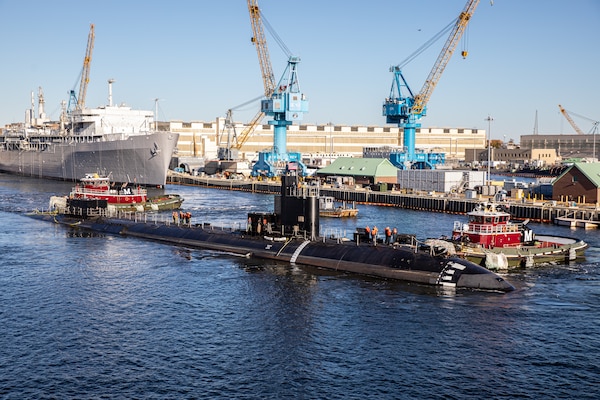
PORTSMOUTH, Va. (Sept. 29, 2015) USS La Jolla (SSN 701) is undergoing conversion from an operational fast-attack submarine into a Moored Training Ship (MTS) at Norfolk Naval Shipyard in Portsmouth, Virginia.

Nov 12, 2019
Norfolk Naval Shipyard (NNSY) successfully completed the conversion of USS La Jolla (SSN 701) into a Moored Training Ship Nov. 7. La Jolla is the first of two next-generation training ships converted at NNSY to become land-based platforms for training nuclear Sailors at the Nuclear Power Training Unit (NPTU) in Charleston, South Carolina. (Photo by Shelby West, Norfolk Naval Shipyard Photographer)

- Joined
- Apr 2, 2017
- Messages
- 38,640
- Points
- 463
USS Fiske (DE-143) was an Edsall-class destroyer escort built for the United States Navy during World War II. Named for Rear Admiral Bradley Allen Fiske, she was the first of two U.S. Naval vessels to bear the name. The vessel entered service in 1943 and served in the Atlantic Ocean during World War II as part of a hunter-killer anti-submarine group. On 2 August 1944, Fiske was sunk by a torpedo fired by the German submarine U-804. Thirty-three of the ship's crew were killed and a further 50 were injured.
Completing her Casablanca runs with her return to New York on 21 May 1944 Fiske joined the hunter-killer group formed around USS Wake Island at Norfolk on 10 June. Five days later her group sailed to patrol across the Atlantic, putting into Casablanca to replenish 20 to 24 July. On 2 August, during a special hunt for submarines known to be transmitting weather information from stations in the central Atlantic, Fiske and USS Douglas L. Howard were detached from the task group to investigate a visual contact both had made. The contact (north of the Azores), surfaced U-804, quickly dived, but the two escorts picked it up on sonar, and began their attack approach. Suddenly, Fiske was torpedoed on her starboard side amidships, and within 10 minutes, she broke in two and had to be abandoned. Thirty-three of her men were killed and 50 badly wounded by the explosion, but all who survived it were rescued by USS Farquhar.

USS Fiske split in two after being torpedoed by the German submarine U-804 on 2 August 1944

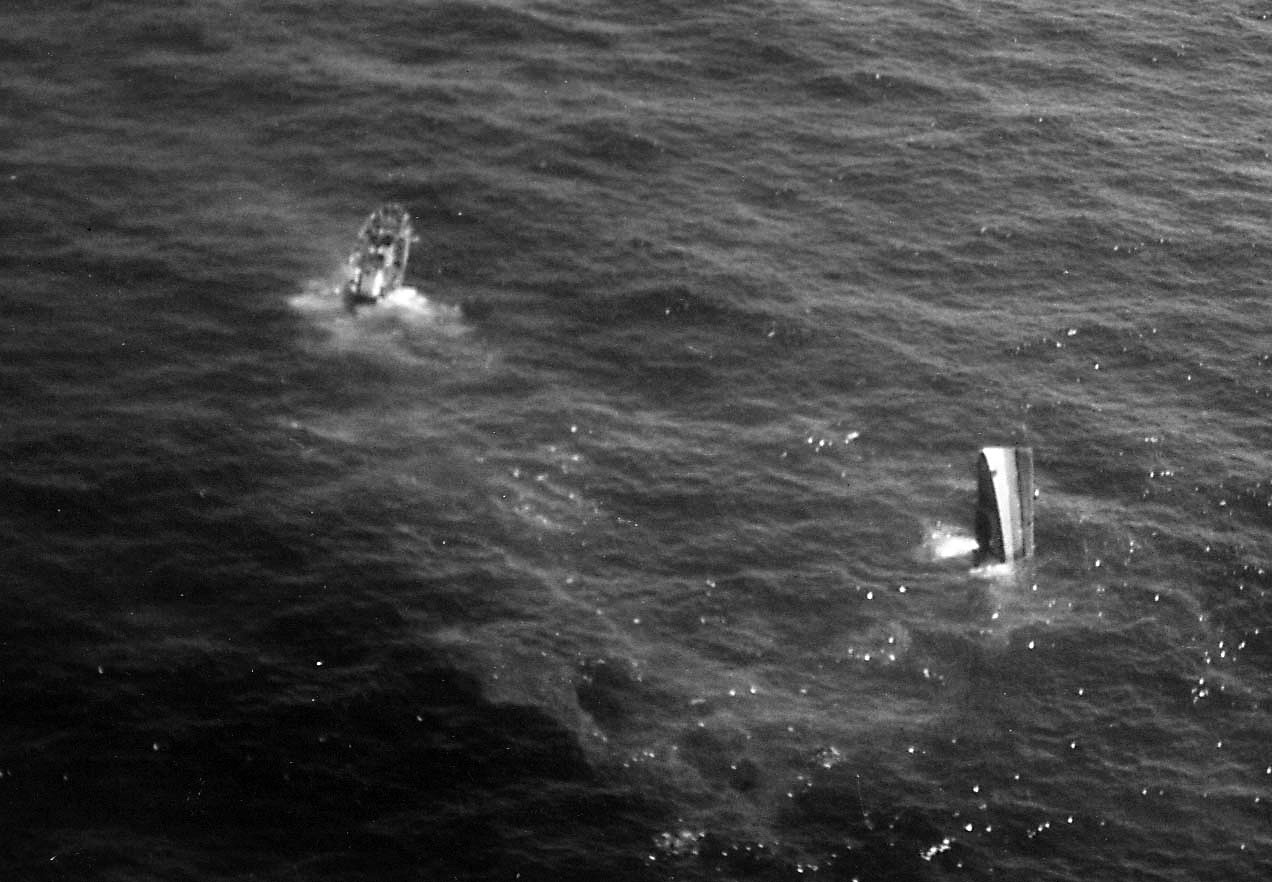
Completing her Casablanca runs with her return to New York on 21 May 1944 Fiske joined the hunter-killer group formed around USS Wake Island at Norfolk on 10 June. Five days later her group sailed to patrol across the Atlantic, putting into Casablanca to replenish 20 to 24 July. On 2 August, during a special hunt for submarines known to be transmitting weather information from stations in the central Atlantic, Fiske and USS Douglas L. Howard were detached from the task group to investigate a visual contact both had made. The contact (north of the Azores), surfaced U-804, quickly dived, but the two escorts picked it up on sonar, and began their attack approach. Suddenly, Fiske was torpedoed on her starboard side amidships, and within 10 minutes, she broke in two and had to be abandoned. Thirty-three of her men were killed and 50 badly wounded by the explosion, but all who survived it were rescued by USS Farquhar.

USS Fiske split in two after being torpedoed by the German submarine U-804 on 2 August 1944


- Joined
- Apr 2, 2017
- Messages
- 38,640
- Points
- 463
USN:
PACIFIC OCEAN (March 21, 2017)
Sailors aboard the Arleigh Burke-class guided-missile destroyer USS Kidd (DDG 100) prepare for a replenishment-at-sea while underway conducting a composite training unit exercise (COMPTUEX) with the Nimitz Carrier Strike Group in preparation for an upcoming deployment. COMPTUEX tests the mission readiness of the strike group's assets through simulated real-world scenarios and their ability to perform as an integrated unit. (U.S. Navy photo by Mass Communication Specialist 3rd Class Deanna C. Gonzales/ Released). DVIDS.
THE PIRATES OF THE PACIFIC CARRY ON DISTINCT NAVAL LEGACY
Unbeknownst to many in the United States Navy, there is one Naval vessel in all of the Fleet which carries a distinct and unique authorization - the permission to fly the Jolly Roger, the traditional flag of pirates. This honor belongs solely to the ships named after RADM Isaac Kidd. The black flag emblazed with a skull and crossbones underneath is seen often in movies or pictures atop the mast of the ship of plundering marauders, and while KIDD Sailors are no terrors of the high seas, there is pride in having the ability to fly the Jolly Roger as a reminder of their namesake’s history and sacrifice.

151207-N-ZZ999-435 ATLANTIC OCEAN (Dec. 7, 2015) The future USS Zumwalt (DDG 1000) is underway for the first time conducting at-sea tests and trials in the Atlantic Ocean Dec. 7, 2015. The multimission ship will provide independent forward presence and deterrence, support special operations forces, and operate as an integral part of joint and combined expeditionary forces. (U.S. Navy photo courtesy of General Dynamics Bath Iron Works/Released)

PACIFIC OCEAN (March 21, 2017)
Sailors aboard the Arleigh Burke-class guided-missile destroyer USS Kidd (DDG 100) prepare for a replenishment-at-sea while underway conducting a composite training unit exercise (COMPTUEX) with the Nimitz Carrier Strike Group in preparation for an upcoming deployment. COMPTUEX tests the mission readiness of the strike group's assets through simulated real-world scenarios and their ability to perform as an integrated unit. (U.S. Navy photo by Mass Communication Specialist 3rd Class Deanna C. Gonzales/ Released). DVIDS.
THE PIRATES OF THE PACIFIC CARRY ON DISTINCT NAVAL LEGACY
Unbeknownst to many in the United States Navy, there is one Naval vessel in all of the Fleet which carries a distinct and unique authorization - the permission to fly the Jolly Roger, the traditional flag of pirates. This honor belongs solely to the ships named after RADM Isaac Kidd. The black flag emblazed with a skull and crossbones underneath is seen often in movies or pictures atop the mast of the ship of plundering marauders, and while KIDD Sailors are no terrors of the high seas, there is pride in having the ability to fly the Jolly Roger as a reminder of their namesake’s history and sacrifice.

151207-N-ZZ999-435 ATLANTIC OCEAN (Dec. 7, 2015) The future USS Zumwalt (DDG 1000) is underway for the first time conducting at-sea tests and trials in the Atlantic Ocean Dec. 7, 2015. The multimission ship will provide independent forward presence and deterrence, support special operations forces, and operate as an integral part of joint and combined expeditionary forces. (U.S. Navy photo courtesy of General Dynamics Bath Iron Works/Released)

- Joined
- Apr 2, 2017
- Messages
- 38,640
- Points
- 463
USN:
View on deck of USS Monitor looking forward on the starboard side, while the ship was in the James River, Virginia, 9 July 1862. The turret, with the muzzle of one of Monitor's two XI-inch Dahlgren smoothbore guns showing, is at left. Note dents in turret armor from hits by Confederate heavy guns and crewmembers atop the turret. (U.S. Naval History & Heritage Command Photograph)

Spanish-American War. “Bombardment of Morro Castle by the U.S. Fleet. Unknown artist.

View on deck of USS Monitor looking forward on the starboard side, while the ship was in the James River, Virginia, 9 July 1862. The turret, with the muzzle of one of Monitor's two XI-inch Dahlgren smoothbore guns showing, is at left. Note dents in turret armor from hits by Confederate heavy guns and crewmembers atop the turret. (U.S. Naval History & Heritage Command Photograph)

Spanish-American War. “Bombardment of Morro Castle by the U.S. Fleet. Unknown artist.

- Joined
- Apr 2, 2017
- Messages
- 38,640
- Points
- 463
Germany:
Battleship Tirpitz with guns trained to port.

KMS Scharnhorst follows KMS Gneisenau as they engage in the sinking of the aircraft carrier HMS Glorious and her two escorting destroyers, Acasta and Ardent in Operation Juno
Battleship Tirpitz with guns trained to port.

KMS Scharnhorst follows KMS Gneisenau as they engage in the sinking of the aircraft carrier HMS Glorious and her two escorting destroyers, Acasta and Ardent in Operation Juno

- Joined
- Apr 2, 2017
- Messages
- 38,640
- Points
- 463
RN:
HMS Amphitrite photographed during World War I, when the ship was a mine layer. Ship in background is a Renown class battle cruiser.

HMS New Zealand. Wellington, c.1914.
During this port visit, HMS New Zealand was visited by a Maori delegation, who presented Captain Lionel Halsey with a traditional war skirt and pendant that were said to bring good luck in battle. New Zealand's next Captain, Jimmy Green, wore both during the Battle of Jutland in 1916, and New Zealand came through the battle having taken only one hit with no casualties.
HMS Amphitrite photographed during World War I, when the ship was a mine layer. Ship in background is a Renown class battle cruiser.

HMS New Zealand. Wellington, c.1914.
During this port visit, HMS New Zealand was visited by a Maori delegation, who presented Captain Lionel Halsey with a traditional war skirt and pendant that were said to bring good luck in battle. New Zealand's next Captain, Jimmy Green, wore both during the Battle of Jutland in 1916, and New Zealand came through the battle having taken only one hit with no casualties.

- Joined
- Apr 2, 2017
- Messages
- 38,640
- Points
- 463
Italy:
Roma listing and on fire shortly before sinking, 9 September 1943
Roma was sunk by a FX-1400 guided bomb during a Luftwaffe attack on the Italian fleet which, in compliance with the terms of the Armistice of Cassibile, was sailing towards Malta (originally towards La Maddalena in Sardinia where it was supposed to stop for some time waiting for the situation to clear up, long story).
The German attack and the sinking of the Roma are thus described by Lieutenant Agostino Incisa della Rocchetta, fire control officer of the port side 90 mm anti-aircraft guns. Incisa, pictured here onboard Roma, was one of the survivors who were closer to the point where the bomb fell, causing the deflagration that sank the ship; he was also the highest ranking survivor, having personally given the order to abandon ship as all officers senior to him were dead or dying.
“From 12:00 to 16:00 I was off duty (…) in my place in the port anti-aircraft fire director turret was Lieutenant Natale Contestabile. I was with the senior fire control officer, Lieutenant Commander Luigi Giugni, in the “technical artillery administrative office”, a semicircular room next to the conning tower, just below the bridge. (…) Suddenly I heard a voice: “Aircraft on the starboard side!” I immediately headed out of the room and I saw a German twin-engined aircraft. Immediately afterwards, a red light departed from its fuselage and the same voice as before said: “It made a recognition signal”. Whoever had said that was apparently right, as it seemed that the aircraft had dropped one of those flares that German aircraft used in order to be recognized by the ships: usually they split up into three or four stars of different colors, according to a sequence that had been agreed between German air force commands and Italian naval commands. But this time the flare did not split up, it came straight down, leaving a light blue-ish trail. A few seconds later, I saw a column of water rise about a hundred meters from Roma.
Only after such an obvious manifestation of hostility by the Germans, the “air attack alarm” signal was given on Roma, and thus Medanich, the fire director of the 90 [mm anti-aircraft guns] on the port side, was able to open fire on the second aircraft that was coming towards us (they attacked one at a time). He had been boiling with impatience for some time, as he had had the aircraft in his sights for a long time. In the meantime, I had gone to the bridge (…) I wanted to see someone from the command in order to receive some directive. I saw Captain Del Cima in the enclosed bridge, inspecting the sky with his binoculars, and I noticed that the forward armoured door of the conning tower was open. He did not say anything and I rushed towards my turret, from which Contestabile came out and I took his place. (…)
With my port guns I could only fire on the aircraft that were flying away after attacking us; a meager satisfaction, as this was a punitive fire, not a preventive one, which is the kind of fire that is essential for the safety of the ship.
I barely noticed the impact of the first bomb, as I did not feel the oscillations of the ship, being absorbed in [directing] the fire of my guns. However power went out for a few seconds and I saw with serious concern the gabion of the radar which, having detached from its support owing to the concussion caused by the bomb, had fallen onto the barrel of my no. 1 gun, blocking it; as I was about to order the crew of that plant to come out of the turret and throw the gabion into the sea, I was warned of another aircraft, approaching from the starboard. (…) I rotated the turret but I was unable to put it into the sights of the turret’s binoculars (…) so I followed it with my personal pair of binoculars. (…)
A few seconds passed; I am not sure if I saw the red flare detaching from the aircraft, but I remember, as if it were now, a huge black barrel that fell down, missing the turret by no more than one metre. We heard a dull thud and the power inside the turret went out. I gave the order to switch to the aft fire direction center, which was just aft of the turret, but a bit lower, and I jumped from the turret to the roof of the bridge [of the fire direction center]. There I found Contestabile, who asked me: “What’s happening?”, I answered: “It’s simple, a bomb fell and now steam and black smoke are coming out of here”. A thick cloud of steam mixed with smoke came out of a point located between the conning tower and the portside forward 152 mm turret. I had just finished saying that, when a tremendously violent puff came out of the bowels of the ship, the atmosphere around me became deep yellow and an unbearable wave of heat engulfed me.
I think that the ship was suddenly lifted and then violently fell back, as I found myself lying on the roof of the bridge, with my arms stretched forward. I saw the skin of my hands contract, wrinkle and take the dusky color of roasted meat; I felt all the skin of my face contract from the cheekbones, from the forehead, from the cheeks, from the chin, as if a huge hand of fire wanted to collect it in its fist, near the mouth.
There’s a ethnological museum in Rome, the Pigorini Museum, derived from the Kircherian Museum, founded by Jesuit father Kircher, where strange trophies of the Mundrukos (Brazil), Jivaros and Ochuali (Ecuador) natives are exposed. These are heads of enemies of these tribes, deboned and reduced to the size of a fist; their mouth is sewn shut with colored cords, so that they won’t be able to curse those who did that to them. I felt like my head had become like the ones at the museum: a terrible feeling.
It should be noted that I was not directly engulfed by the fire, but rather cooked by the reflection: I was 3 or 4 meters from the flame. All of this happened in 4 or 5 seconds (…) the burst of flame lasted a few seconds and in that short time it doomed our most modern battleship, but in that tragedy we had a little luck: there was a deflagration and not an explosion (…) The propellant charges of two 152 mm turrets and of one, perhaps two 381 mm turrets, caught fire all at the same time; several tons of cordite, which caused a powerful puff, a huge burst of flame, but did not explode. The explosive inside the shells was not involved, otherwise the ship would have been pulverized (…) TNT explodes, cordite deflagrates, at least ours (…) Roma’s magazines therefore deflagrated and allowed 1/3 of the crew to save themselves.
However the trauma, for me, had been so deep that I was so sure that the burns I had suffered would not allow my survival (I was, in other words, so sure I was going to die) that, being then as now a convinced Catholic, I prepared spiritually for death and I waited with calm and extraordinary serenity the moment of death. I was even curious to see what was beyond, without fear, with trust. Since then I have regretted that perfect preparedness for death, and I fear that it will not come back, that when my time comes I won’t have the time or the right spiritual disposition. Frankly, I consider that as a lost occasion.
Minutes passed, and nothing happened. So I took a look around me: there was nobody in sight. Contestabile had disappeared, nobody came out of the conning tower. The armored door [of the conning tower] was closed by an electrical motor. It is true that it was also possible to manually open it with a ratchet lever, but I was too weak to operate it, and on top of that I think it [the lever] existed only inside the conning tower.
I rose to my feet and I had the curiosity to peek to the left, where the bomb had fallen, and I laid my hands on the rail: it was scorching hot; the paint on the superstructures detached in bubbles and burned, crackling, making acrid smoke. Thus I burned my hands even on the underside and the skin detached from the palms and remained hanging like a pair of gloves (…). The thick smoke prevented me from seeing anything and I did not notice that the revolving part of the no. 2 main gun turret was no longer there.
Still thinking that I was going to die, I decided to find a place where I could die without breathing so much smoke and I climbed the ladder on the aft side of the conning tower till the admiral’s bridge; having learned after burning my palms on the rail, I leaned on the handrail with my flexed arms, so that the handrail would be in contact with the interior side of my arms, protected by the sleeves of my fabric coat. On the admiral’s bridge, the air was respirable, but the minutes passed and I did not die: I had to admit that death was postponed to another time. I did not see anyone there, either; the conning tower was closed and there was a great silence. I knew that besides several officers which I knew well and I held in great esteem, Admiral Bergamini must have been inside, a man of extraordinary humanity and beloved by everyone, and with him Rear Admiral Stanislao Caraciotti, a moral figure without equals, friend of my family since many years. Sadly I was too weak to try anything to rescue them.
I climbed down all the ladders and below the signal station I saw, entangled upside down in the steps, the charred body of a signalman.
When I reached the forecastle on the starboard side, a group of people, who I think were a petty officer and two enlisted men, pointed me the hole made by the first bomb; I proceeded towards the stern, crawling on all fours beneath the motorboat which had fallen across the forecastle, having been hurled out of its supports atop the deckhouse; I climbed down the ladders that led aft and I found myself in the middle of a group of people, all uninjured and wearing lifejackets, who were meandering aimlessly. I told anyone who could hear me and especially the officers, not to jump into the sea, to wait as the ship, despite the heavy list, seemed still capable of floating. Then I climbed back up the port ladder that led to the forecastle, looking for a lifevest. A seaman appeared at the aft door of the nearby 152 mm turret and gave me a lifejacket. Later in Mahon I tried to find out who he had been, but I was unable to discover anything. I think it was an angel… I really think so, because without that lifejacket I would not have been able to stay afloat. Perhaps it was the one crew member from that turret that was never found.
I saw Ensign Scotto, unconscious, lying a few meters from the turret. I told Ensign Meneghini, who was passing by, to pick him up and help him, which he did.
Having returned astern, I saw that the ship was listing more and more and that the water was licking the gunwale. Having realized that I was the highest ranking officer still alive, I gave the order to abandon ship. But many did not recognize me, as my face was blackened and my moustache burned off; I remember that Sub-Lieutenant Negrozzi tied my lifejacket to me, after I had taken off my coat, my binoculars and my handgun, I had carefully laid everything on an air intake and I had placed my shoes, perfectly aligned, at the base of the air intake. (…) I was sorry for having to leave my gun behind, for it was not a standard issue: it was a chrome-plated Smith & Wesson revolver, which I carried in a holster hanging on my left shoulder, below the coat, at the height of my elbow, like American policemen and gangsters. I kept on, besides my trousers, the pullover of the Naval Academy, the blue one with crossed red anchors, surmounted by the royal crown, on the left arm.
In the meantime some officers and several petty officers and men threw overboard the Carley floats that were atop the aft turrets; I think that the ones of the no. 3 main gun turret were damaged because they were thrown down without much regard and bounced on the deck.
At this point I climbed over the rail and I jumped into the sea “like a duck”; an athletic dive would have been useless, even impossible, since our feet were already level with the sea. I swam away from the ship as fast as I could and I reached a group of three men clinging on a cot. They were Sub-Lieutenants Orefice and Fidone and a seaman, I think yeoman Del Vecchio, who had lost the upper part of the biceps. The officers prayed me not to grab the cot in turn, otherwise we would have all sunk to the bottom. So I remained a few meters from them.
Meanwhile, the ship was listing more and more and the personnel who were still on the stern, uncertain if it would be better to jump from the starboard side (fearing that the capsizing ship would have fallen on them) or from the port side (where they would have to jump from a considerable height), started to roll over the deck, which was now almost vertical. They were at least twenty people, who could be clearly seen thanks to the red lifejackets they were wearing. Then the ship heeled over and some men managed to climb onto the overturned hull. But as soon as she was upside down, she broke into two: the aft part sank with an angle of 45 degrees, and a couple of men that slid under the waves clutching one of the great bronze screws that were shining under the sun, was the last sight I had of it. The bow part remained afloat for a longer time, in vertical position, to the point that we were perfectly able to see the red and golden emblem of Rome with the word “SPQR”; then it sank vertically: the two Sub-Lieutenants cried “Long live the King” and I joined them.
(…) The men on the motorboat [sent by the destroyer Mitragliere to pick up the survivors] shouted “The wounded first!”; I showed my hands and they immediately hauled me aboard. (…) As soon as I was on Mitragliere, they cut my pullover so that they would not have to pull it out over my burned hands and head. Someone gave me some liquor to drink; the nurse painted my hands with tannin and put some kind of ointment on my face and legs, also partially burned. (…) at dawn we were in front of the harbour of Mahon and at 8:30 we were landed from the ships and sent to the military hospital”.
Lieutenant Agostino Incisa della Rocchetta

Fritz-X Guided Bomb replica

Roma listing and on fire shortly before sinking, 9 September 1943

Roma was sunk by a FX-1400 guided bomb during a Luftwaffe attack on the Italian fleet which, in compliance with the terms of the Armistice of Cassibile, was sailing towards Malta (originally towards La Maddalena in Sardinia where it was supposed to stop for some time waiting for the situation to clear up, long story).
The German attack and the sinking of the Roma are thus described by Lieutenant Agostino Incisa della Rocchetta, fire control officer of the port side 90 mm anti-aircraft guns. Incisa, pictured here onboard Roma, was one of the survivors who were closer to the point where the bomb fell, causing the deflagration that sank the ship; he was also the highest ranking survivor, having personally given the order to abandon ship as all officers senior to him were dead or dying.
“From 12:00 to 16:00 I was off duty (…) in my place in the port anti-aircraft fire director turret was Lieutenant Natale Contestabile. I was with the senior fire control officer, Lieutenant Commander Luigi Giugni, in the “technical artillery administrative office”, a semicircular room next to the conning tower, just below the bridge. (…) Suddenly I heard a voice: “Aircraft on the starboard side!” I immediately headed out of the room and I saw a German twin-engined aircraft. Immediately afterwards, a red light departed from its fuselage and the same voice as before said: “It made a recognition signal”. Whoever had said that was apparently right, as it seemed that the aircraft had dropped one of those flares that German aircraft used in order to be recognized by the ships: usually they split up into three or four stars of different colors, according to a sequence that had been agreed between German air force commands and Italian naval commands. But this time the flare did not split up, it came straight down, leaving a light blue-ish trail. A few seconds later, I saw a column of water rise about a hundred meters from Roma.
Only after such an obvious manifestation of hostility by the Germans, the “air attack alarm” signal was given on Roma, and thus Medanich, the fire director of the 90 [mm anti-aircraft guns] on the port side, was able to open fire on the second aircraft that was coming towards us (they attacked one at a time). He had been boiling with impatience for some time, as he had had the aircraft in his sights for a long time. In the meantime, I had gone to the bridge (…) I wanted to see someone from the command in order to receive some directive. I saw Captain Del Cima in the enclosed bridge, inspecting the sky with his binoculars, and I noticed that the forward armoured door of the conning tower was open. He did not say anything and I rushed towards my turret, from which Contestabile came out and I took his place. (…)
With my port guns I could only fire on the aircraft that were flying away after attacking us; a meager satisfaction, as this was a punitive fire, not a preventive one, which is the kind of fire that is essential for the safety of the ship.
I barely noticed the impact of the first bomb, as I did not feel the oscillations of the ship, being absorbed in [directing] the fire of my guns. However power went out for a few seconds and I saw with serious concern the gabion of the radar which, having detached from its support owing to the concussion caused by the bomb, had fallen onto the barrel of my no. 1 gun, blocking it; as I was about to order the crew of that plant to come out of the turret and throw the gabion into the sea, I was warned of another aircraft, approaching from the starboard. (…) I rotated the turret but I was unable to put it into the sights of the turret’s binoculars (…) so I followed it with my personal pair of binoculars. (…)
A few seconds passed; I am not sure if I saw the red flare detaching from the aircraft, but I remember, as if it were now, a huge black barrel that fell down, missing the turret by no more than one metre. We heard a dull thud and the power inside the turret went out. I gave the order to switch to the aft fire direction center, which was just aft of the turret, but a bit lower, and I jumped from the turret to the roof of the bridge [of the fire direction center]. There I found Contestabile, who asked me: “What’s happening?”, I answered: “It’s simple, a bomb fell and now steam and black smoke are coming out of here”. A thick cloud of steam mixed with smoke came out of a point located between the conning tower and the portside forward 152 mm turret. I had just finished saying that, when a tremendously violent puff came out of the bowels of the ship, the atmosphere around me became deep yellow and an unbearable wave of heat engulfed me.
I think that the ship was suddenly lifted and then violently fell back, as I found myself lying on the roof of the bridge, with my arms stretched forward. I saw the skin of my hands contract, wrinkle and take the dusky color of roasted meat; I felt all the skin of my face contract from the cheekbones, from the forehead, from the cheeks, from the chin, as if a huge hand of fire wanted to collect it in its fist, near the mouth.
There’s a ethnological museum in Rome, the Pigorini Museum, derived from the Kircherian Museum, founded by Jesuit father Kircher, where strange trophies of the Mundrukos (Brazil), Jivaros and Ochuali (Ecuador) natives are exposed. These are heads of enemies of these tribes, deboned and reduced to the size of a fist; their mouth is sewn shut with colored cords, so that they won’t be able to curse those who did that to them. I felt like my head had become like the ones at the museum: a terrible feeling.
It should be noted that I was not directly engulfed by the fire, but rather cooked by the reflection: I was 3 or 4 meters from the flame. All of this happened in 4 or 5 seconds (…) the burst of flame lasted a few seconds and in that short time it doomed our most modern battleship, but in that tragedy we had a little luck: there was a deflagration and not an explosion (…) The propellant charges of two 152 mm turrets and of one, perhaps two 381 mm turrets, caught fire all at the same time; several tons of cordite, which caused a powerful puff, a huge burst of flame, but did not explode. The explosive inside the shells was not involved, otherwise the ship would have been pulverized (…) TNT explodes, cordite deflagrates, at least ours (…) Roma’s magazines therefore deflagrated and allowed 1/3 of the crew to save themselves.
However the trauma, for me, had been so deep that I was so sure that the burns I had suffered would not allow my survival (I was, in other words, so sure I was going to die) that, being then as now a convinced Catholic, I prepared spiritually for death and I waited with calm and extraordinary serenity the moment of death. I was even curious to see what was beyond, without fear, with trust. Since then I have regretted that perfect preparedness for death, and I fear that it will not come back, that when my time comes I won’t have the time or the right spiritual disposition. Frankly, I consider that as a lost occasion.
Minutes passed, and nothing happened. So I took a look around me: there was nobody in sight. Contestabile had disappeared, nobody came out of the conning tower. The armored door [of the conning tower] was closed by an electrical motor. It is true that it was also possible to manually open it with a ratchet lever, but I was too weak to operate it, and on top of that I think it [the lever] existed only inside the conning tower.
I rose to my feet and I had the curiosity to peek to the left, where the bomb had fallen, and I laid my hands on the rail: it was scorching hot; the paint on the superstructures detached in bubbles and burned, crackling, making acrid smoke. Thus I burned my hands even on the underside and the skin detached from the palms and remained hanging like a pair of gloves (…). The thick smoke prevented me from seeing anything and I did not notice that the revolving part of the no. 2 main gun turret was no longer there.
Still thinking that I was going to die, I decided to find a place where I could die without breathing so much smoke and I climbed the ladder on the aft side of the conning tower till the admiral’s bridge; having learned after burning my palms on the rail, I leaned on the handrail with my flexed arms, so that the handrail would be in contact with the interior side of my arms, protected by the sleeves of my fabric coat. On the admiral’s bridge, the air was respirable, but the minutes passed and I did not die: I had to admit that death was postponed to another time. I did not see anyone there, either; the conning tower was closed and there was a great silence. I knew that besides several officers which I knew well and I held in great esteem, Admiral Bergamini must have been inside, a man of extraordinary humanity and beloved by everyone, and with him Rear Admiral Stanislao Caraciotti, a moral figure without equals, friend of my family since many years. Sadly I was too weak to try anything to rescue them.
I climbed down all the ladders and below the signal station I saw, entangled upside down in the steps, the charred body of a signalman.
When I reached the forecastle on the starboard side, a group of people, who I think were a petty officer and two enlisted men, pointed me the hole made by the first bomb; I proceeded towards the stern, crawling on all fours beneath the motorboat which had fallen across the forecastle, having been hurled out of its supports atop the deckhouse; I climbed down the ladders that led aft and I found myself in the middle of a group of people, all uninjured and wearing lifejackets, who were meandering aimlessly. I told anyone who could hear me and especially the officers, not to jump into the sea, to wait as the ship, despite the heavy list, seemed still capable of floating. Then I climbed back up the port ladder that led to the forecastle, looking for a lifevest. A seaman appeared at the aft door of the nearby 152 mm turret and gave me a lifejacket. Later in Mahon I tried to find out who he had been, but I was unable to discover anything. I think it was an angel… I really think so, because without that lifejacket I would not have been able to stay afloat. Perhaps it was the one crew member from that turret that was never found.
I saw Ensign Scotto, unconscious, lying a few meters from the turret. I told Ensign Meneghini, who was passing by, to pick him up and help him, which he did.
Having returned astern, I saw that the ship was listing more and more and that the water was licking the gunwale. Having realized that I was the highest ranking officer still alive, I gave the order to abandon ship. But many did not recognize me, as my face was blackened and my moustache burned off; I remember that Sub-Lieutenant Negrozzi tied my lifejacket to me, after I had taken off my coat, my binoculars and my handgun, I had carefully laid everything on an air intake and I had placed my shoes, perfectly aligned, at the base of the air intake. (…) I was sorry for having to leave my gun behind, for it was not a standard issue: it was a chrome-plated Smith & Wesson revolver, which I carried in a holster hanging on my left shoulder, below the coat, at the height of my elbow, like American policemen and gangsters. I kept on, besides my trousers, the pullover of the Naval Academy, the blue one with crossed red anchors, surmounted by the royal crown, on the left arm.
In the meantime some officers and several petty officers and men threw overboard the Carley floats that were atop the aft turrets; I think that the ones of the no. 3 main gun turret were damaged because they were thrown down without much regard and bounced on the deck.
At this point I climbed over the rail and I jumped into the sea “like a duck”; an athletic dive would have been useless, even impossible, since our feet were already level with the sea. I swam away from the ship as fast as I could and I reached a group of three men clinging on a cot. They were Sub-Lieutenants Orefice and Fidone and a seaman, I think yeoman Del Vecchio, who had lost the upper part of the biceps. The officers prayed me not to grab the cot in turn, otherwise we would have all sunk to the bottom. So I remained a few meters from them.
Meanwhile, the ship was listing more and more and the personnel who were still on the stern, uncertain if it would be better to jump from the starboard side (fearing that the capsizing ship would have fallen on them) or from the port side (where they would have to jump from a considerable height), started to roll over the deck, which was now almost vertical. They were at least twenty people, who could be clearly seen thanks to the red lifejackets they were wearing. Then the ship heeled over and some men managed to climb onto the overturned hull. But as soon as she was upside down, she broke into two: the aft part sank with an angle of 45 degrees, and a couple of men that slid under the waves clutching one of the great bronze screws that were shining under the sun, was the last sight I had of it. The bow part remained afloat for a longer time, in vertical position, to the point that we were perfectly able to see the red and golden emblem of Rome with the word “SPQR”; then it sank vertically: the two Sub-Lieutenants cried “Long live the King” and I joined them.
(…) The men on the motorboat [sent by the destroyer Mitragliere to pick up the survivors] shouted “The wounded first!”; I showed my hands and they immediately hauled me aboard. (…) As soon as I was on Mitragliere, they cut my pullover so that they would not have to pull it out over my burned hands and head. Someone gave me some liquor to drink; the nurse painted my hands with tannin and put some kind of ointment on my face and legs, also partially burned. (…) at dawn we were in front of the harbour of Mahon and at 8:30 we were landed from the ships and sent to the military hospital”.
Lieutenant Agostino Incisa della Rocchetta

Fritz-X Guided Bomb replica

- Joined
- Apr 2, 2017
- Messages
- 38,640
- Points
- 463
- Joined
- Apr 2, 2017
- Messages
- 38,640
- Points
- 463
Japan:
PEARL HARBOR (Feb. 7, 2011) The Japan Maritime Self-Defense Force Oyashio-class submarine JS Uzushio (SS-592) arrives at Joint Base Pearl Harbor-Hickam to begin their annual training exercise. Uzushio will be conducting both in port and at sea training on undersea tactics, anti-submarine warfare and war time strategies. (U.S. Navy photo by Mass Communication Specialist 2nd Class Ronald Gutridge/Released)

PEARL HARBOR (Feb. 7, 2011) The Japan Maritime Self-Defense Force Oyashio-class submarine JS Uzushio (SS-592) arrives at Joint Base Pearl Harbor-Hickam to begin their annual training exercise. Uzushio will be conducting both in port and at sea training on undersea tactics, anti-submarine warfare and war time strategies. (U.S. Navy photo by Mass Communication Specialist 2nd Class Ronald Gutridge/Released)

Similar threads
- Replies
- 2
- Views
- 7K
- Replies
- 0
- Views
- 1K
- Replies
- 0
- Views
- 1K
- Replies
- 15
- Views
- 4K
- Replies
- 583
- Views
- 67K
- Sticky
- Replies
- 758
- Views
- 78K














